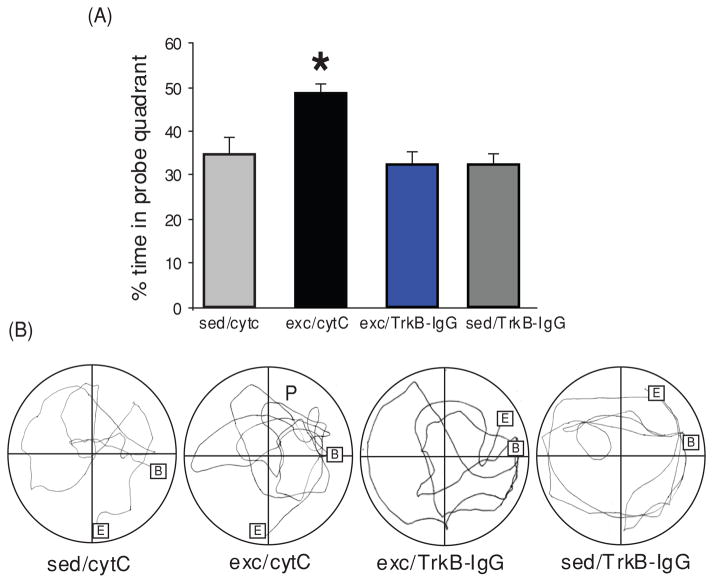Figure 7.
Role of brain-derived neurotrophic factor (BDNF) on the action of exercise on learning and memory assessed in the Morris Water Maze task. (A) Exercise improved learning ability as depicted by the enhanced aptitude of exercised animals to locate the platform in a significantly shorter time (shorter escape latencies in the exc/cytC group). Blocking BDNF action during exercise resulted in escape latency comparable to sedentary control animal (exc/TrkB-IgG vs. sed/cytC). The BDNF receptor blocker TrkB-IgG was injected into the hippocampus and cytochrome C (cytC) was used as a vehicle control. Data are expressed as mean ± SEM (ANOVA; Fischer test; Scheffe Fischer test; *, P < 0.05; **,‡‡, P < 0.01; * represents comparison between groups, ‡‡ represents comparison within groups). (B) Exercise increased the memory retention as indicated by significantly more time in quadrant P than sedentary controls (exc/cytC vs. sed/cytC). Blocking BDNF action during exercise abolished this exercise-induced preference for the P quadrant (exc/TrkB-IgG vs. exc/cytC), to sedentary control levels (exc/TrkB-IgG vs. sed/cytC). Representative samples of trials traveled during the probe test (B, begin, E, end, P, quadrant which previously housed the platform). Each value represents the mean ± SEM (ANOVA; Fischer test; *, P < 0.05). Reprinted, with permission, from reference (190), pp. 2582, 2584.

